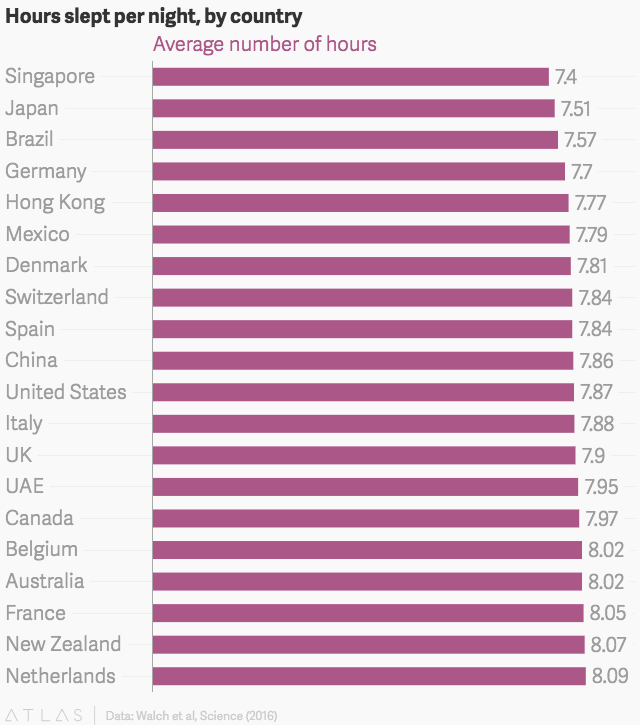What the world’s sleeping patterns look like

Countries differ quite a bit in how they sleep. On average, Japanese people sleep nearly an hour less than the Dutch.

The data behind this chart was collected by researchers the University of Michigan using a free sleep-tracking smartphone app they released in 2014. More than 5,000 people from 20 countries agreed to share their data for the research.
What affected the number of hours slept, according to the researchers, was not how early a country woke up, but the time at which the country went to sleep.
The data across age groups and gender agreed with previous research. Women, on average sleep, more than men. One reason is because women tend to multi-task more than men, and thus their brains need more rest to recover.

Collecting reliable data on people’s sleep habits has always been a difficult challenge. Self-reported data, where researchers ask people about their sleep habits, isn’t reliable, because people often under-report how much they sleep. It is more reliable to watch people sleep in the lab, but then researchers can’t be sure whether participants’ sleep in the lab would be just like their sleep at home.
However, more recently, the use of smartphones and wearable devices is making sleep data collection easier and more reliable. This is helping us to correct some of the modern myths about sleep, such as we’re not getting enough of it.

Sign up for the Quartz Daily Brief, our free daily newsletter with the world’s most important and interesting news.
More stories from Quartz:

 Yahoo Finance
Yahoo Finance 